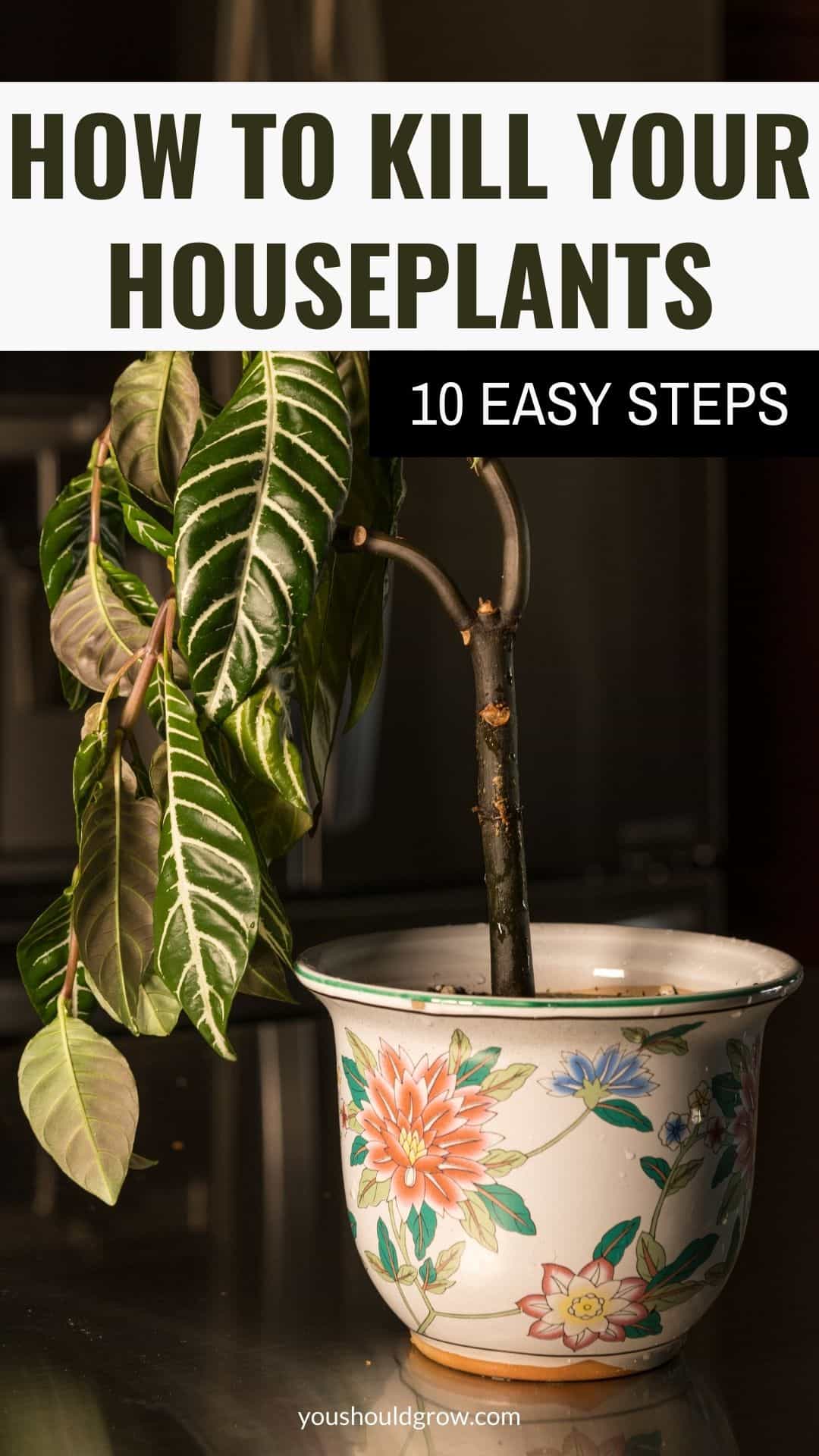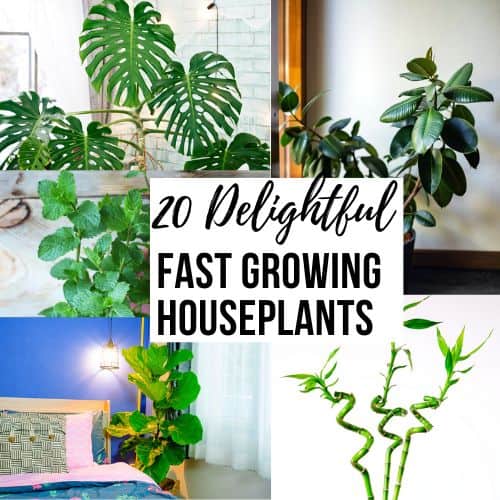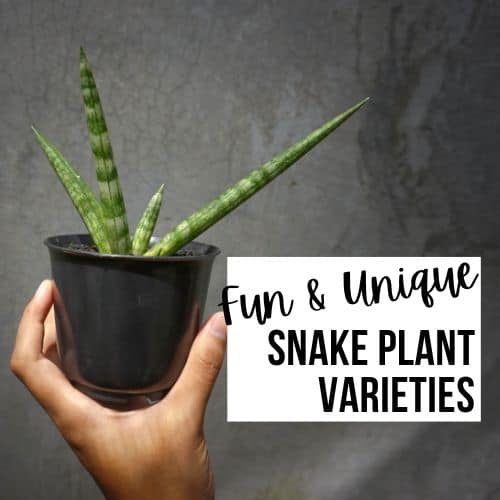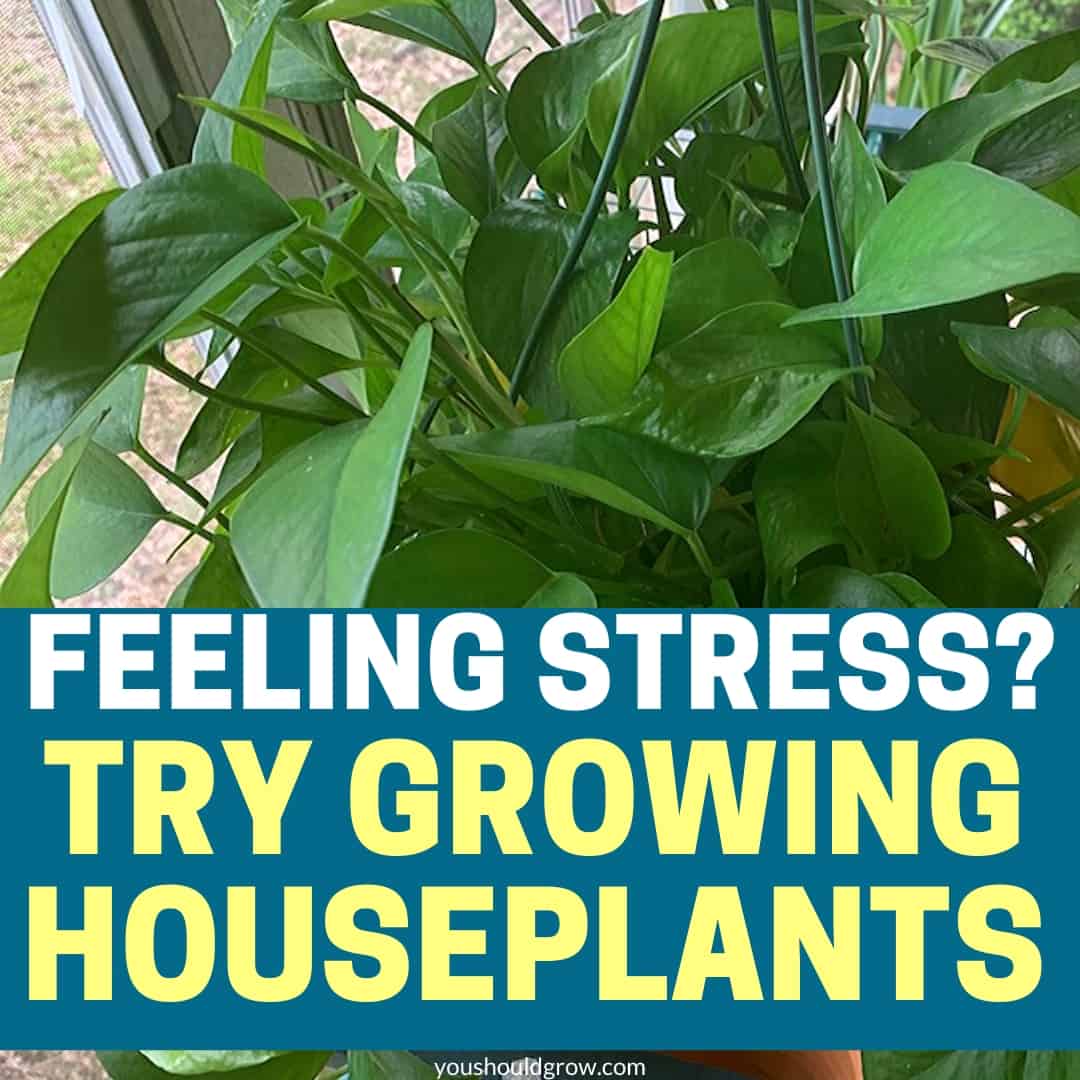10 Reasons Your Houseplants Are Dying
As an Amazon Associate and member of other affiliate programs, I earn from qualifying purchases.
If you’ve ever struggled to keep a houseplant alive, here are some reasons that could explain why your plants are not thriving. The truth is most people overcomplicate keeping houseplants happy and healthy. While there are some plants that are super temperamental, many plants really don’t want a lot of fussing over them.
So if you think you have a black thumb, the good news is that you might just need to stop doing these things.
You’re overwatering
Overwatering, not underwatering, is the most common mistake houseplant owners make. Soggy roots are a death trap for any plant, and some more so than others. This is why it’s important to ask questions or do research on the type of plant you’re growing.
Peace lilies don’t like to dry out, but they don’t like wet bottoms either. Succulents of all kinds will not tolerate consistently wet soil. Pothos can dry out to the point of wilting and bounce back after a good soak, but alocasia is not so forgiving. So there is no one size fits all recommendation for watering houseplants.
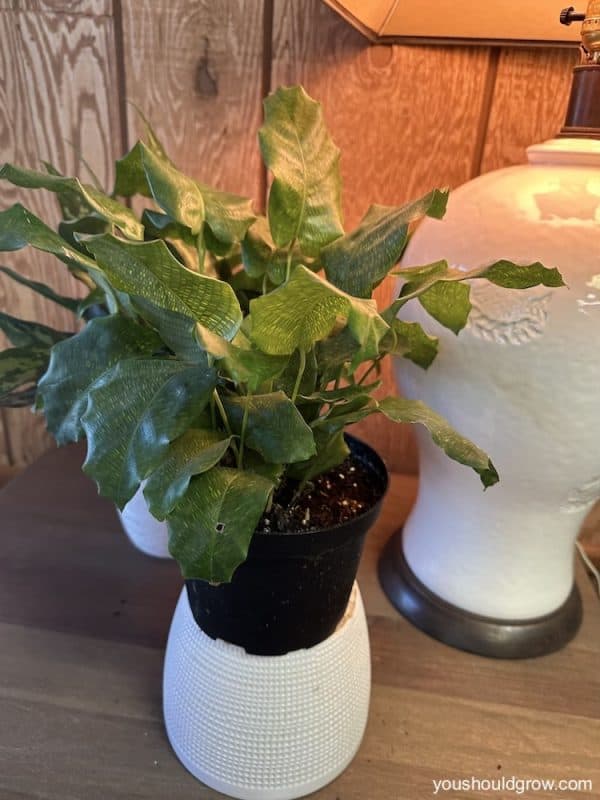
What should you do if you think you’ve overwatered your houseplant?
You’ll often bring home a plant from the store that is or has been overwatered. It’s important to check because big box stores are notorious for trying to kill their inventory.
There are a couple of ways to handle an overwatered plant. If it seems like the soil is staying soggy, make sure there is a drainage hole for water to escape. If not, change the pot stat. If you have your plant in a nursery pot, pull it out of the cover pot (if in one) to get more air to the bottom of the pot. You can also supplement light to increase the uptake of water.
If those things aren’t working, and it’s looking really puny, it’s time for diagnostics. To find out what’s going on, remove the plant from the pot and brush off the soil to check the roots for evidence of rot. Remove anything that is brown and mushy, you can even rinse off the roots in the sink to clean it up. Then when you repot it, replace the old soil with new, better draining soil.
You’re not fertilizing your houseplants
In fresh soil, many houseplants won’t need to be fertilized often. But if it’s growing rapidly or has been in the same soil for several months, chances are the nutrients in the original mix are depleted. And if you’re growing your plants in water, they definitely won’t be getting everything they need without some addition of food. However, over-fertilizing can and will kill your plant no matter what so you need to exercise some caution.
- Always follow the directions on the bottle – dilute it just as recommended unless you’re very familiar with the brand and the plant.
- Buy fertilizer formulated for the type of plant that you’re growing. This makes it easy not to overdo it for plants that don’t need as much supplemental food, like succulents.
- A good rule of thumb is to fertilize once per month. You can skip a few in the winter if your plant is slowing down, or if you can keep conditions right for it to grow year-round, keep the once monthly schedule.
You’re not giving them enough light
I had a pothos growing in possibly the darkest room that ever existed. Seriously. All windows were under porches, and I was forever shocked that it was doing so well. But some plants won’t tolerate such low light conditions. If your plant is not growing and/or the leaves are changing color (green to yellow or losing variegation), then your plant may be begging for supplemental lighting.
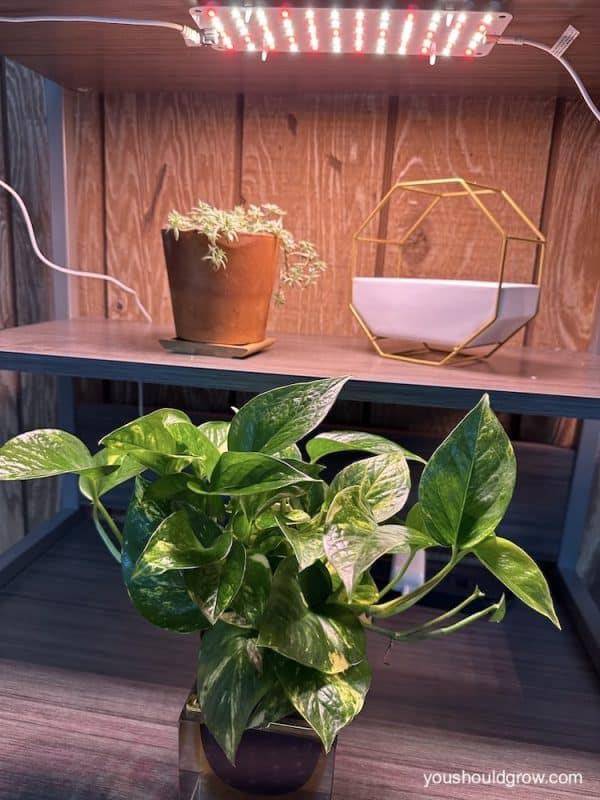
How to add more light to your houseplants?
Fortunately, it couldn’t be more simple to add supplemental light to your plants. I have used regular lamps with full spectrum light bulbs, individual halo lights, hanging light bars, and under-shelf light kits. I’ve bought grow light bulbs in person at the grocery store, walmart, and homedepot. There are also innumerable options online.
When you set up the light, pay attention to how far away it is from the plant. I have a grow light bulb in the fixture over my sink, and it’s fine for the peace lily and the pothos, but my succulents were getting anemic. I brought in a halo light but it was still not very bright. I had to bring it right down as close as possible to the plant. LEDs are nice because they don’t produce much if any heat, however, make sure to check for heat on any light you choose. With seedlings, we keep the lights 2-4 inches away, but this may be too close for plants that prefer indirect light. Pay attention to your plant and move it closer or further depending on how it responds.
Their location is too drafty
Naturally, we all locate live plants next to windows and windowed doors so they can receive the most light. But some plants are going to be VERY sensitive to drafts and fluctuations in temperature. This is especially true in the winter since most houseplants won’t tolerate freezing temperatures. So if your plant is dropping leaves, think about whether it’s getting blasted with cold air every time you open your door. Or if your house is old, like mine, is it generally too cold in the window during winter?
Cold and wet soil is a recipe for disaster so think about whether you should move them or provide supplemental heat if your plants are suddenly not doing well. In all seasons, make note of whether you’re plants are in the path of air coming from your a/c vents. Heated air blowing from your vents directly onto plants is not going to be well tolerated – it will cause them to dry out a lot faster and make your work harder.
You’re not rotating your plant
Unless you’re supplementing with overhead light, it is natural for plants to grow toward light coming in through the window. So to keep your plant nice and fluffy, you’ll want to rotate your plant about a quarter of a turn once per month – or if you notice it leaning into the light. Rotation helps keep the growth even all the way around and keeps its stem strong.
You’re moving them too much
I’m not referring to rotating, here, I mean you’re moving it from one room or window to another. A houseplant lives a pretty passive life. From the time it sprouts to the time it gets to your home, it is moved from location to location and often needs time to adjust. From one place to another, the lighting and temperature might change drastically. The watering schedule might change drastically, too. It has no control, it just gets plopped in a room and has to adjust or die.
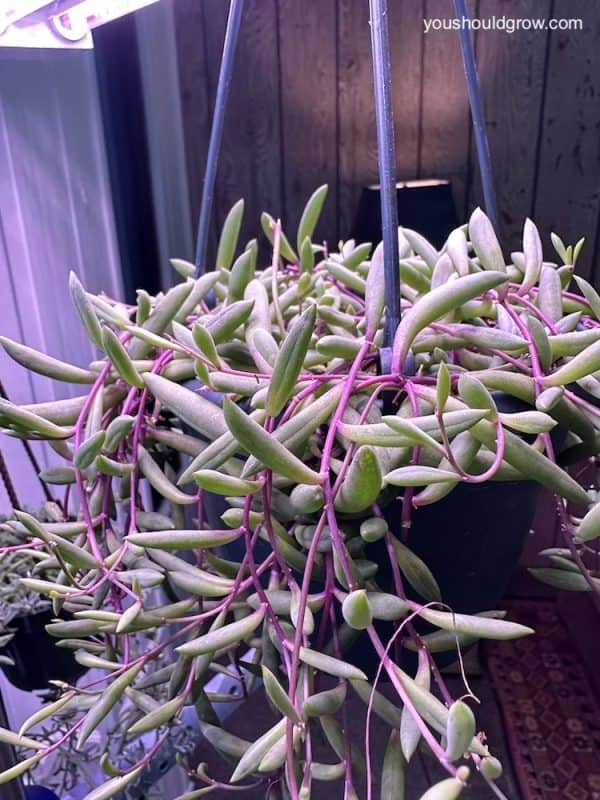
So one of the things to do if you have recently moved a plant is simply to let it be. Give a plant at least 2 weeks to adjust to a new spot before you try moving it again. Obviously, if there are clear signs of illness, you’ll want to step in. But if it just seems a little stressed and you recently moved it, give it a little break. You’ll still be watering it, but don’t worry too much if you see it drop a leaf or two, or start to turn a little yellow. If it bounces back after a couple of weeks, it just needed to pout a bit. Careful watching and waiting can be your friend to make sure you’re giving your plant exactly what it needs.
How often should houseplants be moved?
Some plants don’t ever want to be moved especially if they’ve found themselves a sweet spot. I’m looking at you, fiddle leaf fig. But if you need to move your plants around, shoot for about once a year. Some plants won’t bat an eye at being moved around, but if you are moving them and notice that some are not thriving, consider whether they’re being moved too often or to the wrong place.
You’re not checking for pests
I don’t know about you, but I spend a lot of time inspecting my plants. I like to touch them, lift them up and look under the leaves, poke my finger in the soil, etc. Seriously. They get no privacy. But one of the reasons I do that is so I can recognize any pest problems early.
Certainly, we should be checking any new plants we bring home for signs of pests and disease. Looking under the leaves in the store and after you get home is recommended. If you see any webs on the plants, run away. Far, far away. Many pests look like small or tiny white specs or fuzz. It’s not a bad habit to treat new plants with pesticide and put them in quarantine before you introduce them to their new friends.
What should you do if you find pests on your houseplants?
First and foremost, you should spring into immediate action. If you can do nothing else, take the infected plant to a place where you can isolate it from your other plants. Then get your hands on some form of pesticide.
Personally, while I’m not for using pesticides on my vegetables, I have no feelings against using them on my houseplants. I’m not eating them, and I don’t, as a rule, keep pollinators indoors. I will not tolerate bugs making their home in my home, and I won’t let them ruin my happiness by eating my planties, either. Which one to use? If you can identify the pest, use one directed to kill that pest. If not, just pick one labeled for houseplants and follow the directions on the bottle.
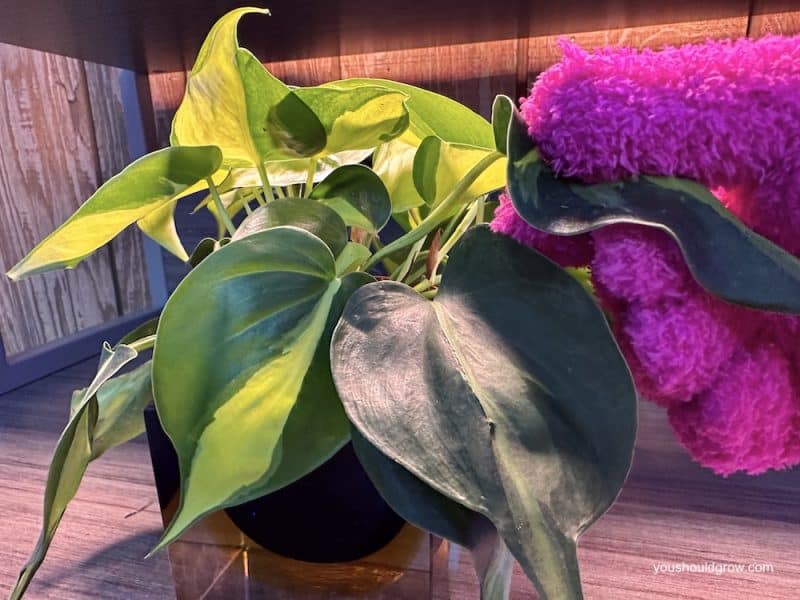
You’re not dusting the leaves
I often forget to dust shelves, fans, etc in my house, but I do wipe the leaves on my plants with some consistency. I saw an influencer, I believe it was Plants With Krystal (I love her). She uses microfiber gloves to clean her plant leaves, and that is what I do now as well. It’s so easy to wipe both sides of the leaves gently and wiping alone often gives them a nice shine. You can dampen the gloves with a little water if you wish, but I personally don’t use anything other than water.
You’re not pruning them
It may seem counterintuitive, but many plants will respond positively to pruning. In a lot of cases, you can even cut them completely down, and they’ll sprout several new branches in response. Anyone dealing with wild privet and oak trees can attest to this. For the most part, houseplants are the same way.
So if you have a plant that is really stretched out and sparse in foliage, do not hesitate to thin out some of the branches. Propagate them or compost them if you wish, but cutting back your houseplants will stimulate new growth almost every time. Add in some extra light and they’ll bush out nicely. Alternatively, thick bushy plants can harbor moisture or pests in their leaves so it’s a good idea to cut them back to encourage airflow and check for nasty buggers.
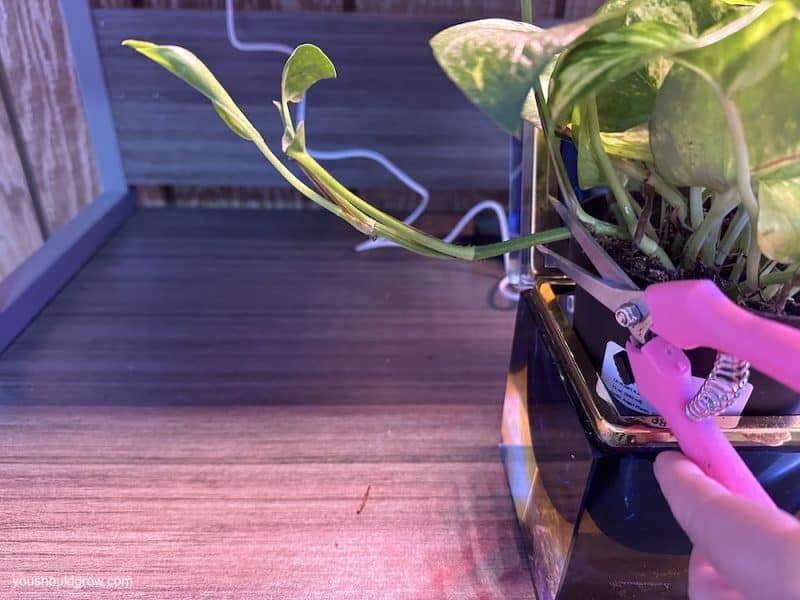
You’re inconsistent
Last but not least, if you’re not paying attention to your plants and alternate underwatering with overwatering, for example, it could be the reason your plants are stunted or growing poorly. It’s the same with light, humidity, and temperature. All of these conditions in their environment influence how they grow. It can affect the small hairs on the plant, called trichomes, the size, shape, and color of leaves, the thickness of the stem, and so on.
Many times, they’ll acclimate to a certain set of conditions and a sudden change in that can cause stress. It’s best to understand what your plant likes and provide that care consistently. Otherwise, it may not die, but it definitely won’t be able to thrive. If and when you do have to change your plant’s environment, understand that it may need time to reacclimate to its new situation.
I hope this has helped you understand what may be going wrong when you bring plants into your home. If you’re worried about a plant you’re growing indoors, don’t hesitate to put on your planterinarian hat and dive in. Oftentimes just by careful observation, you can figure out and fix a problem before you lose another plant pal.


